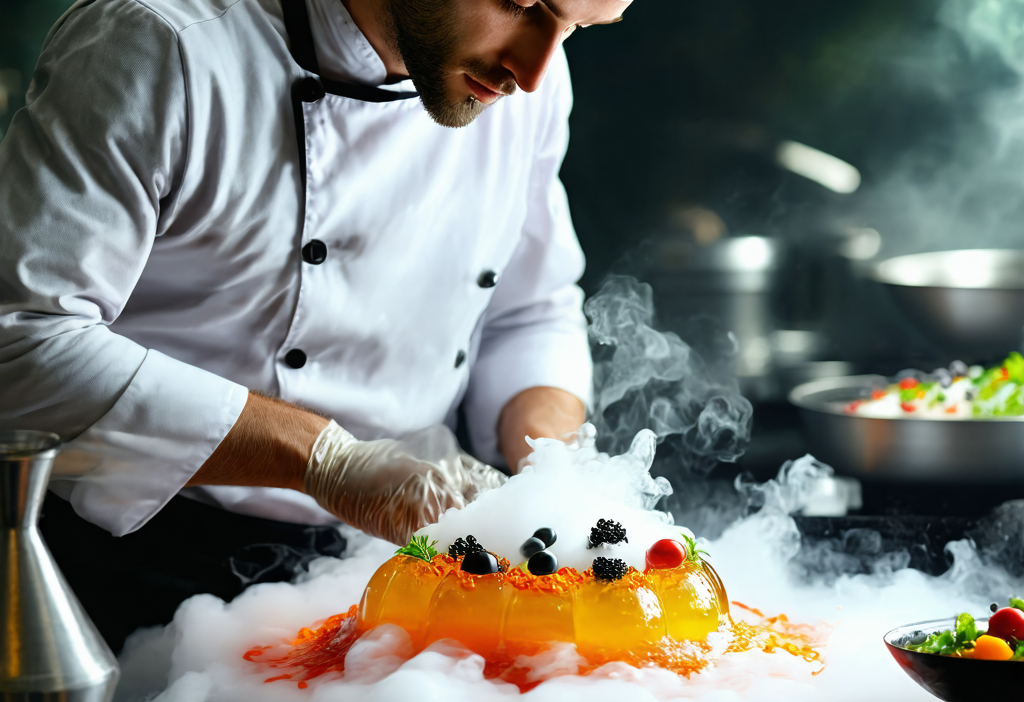What is Molecular Gastronomy?
Molecular gastronomy is a culinary approach that merges science with artistry, transforming traditional cooking into an experimental and innovative practice. It’s not just about food—it’s about the chemistry behind it. By understanding the principles of physics, chemistry, and biology, chefs can manipulate ingredients to create dishes that are as visually stunning as they are flavorful.
Key Techniques in Molecular Gastronomy
To master molecular gastronomy, you need to be familiar with some key techniques. Here are a few:
- Spherification: This technique involves creating small spheres of liquid that burst in your mouth. It’s achieved by using sodium alginate and calcium chloride.
- Cooking Sous Vide: This method cooks food in vacuum-sealed bags at precise temperatures, ensuring evenness and tenderness.
- Using Liquid Nitrogen: Rapidly freezing ingredients can create unique textures, like ice cream that’s churned tableside.
- Emulsification: This technique combines liquids that don’t typically mix, like oil and water, to create sauces or foams.
These techniques require precision and a good understanding of the science behind them. But once you master them, you can create dishes that are truly out of this world.
Essential Tools for Molecular Cooking
To get started with molecular gastronomy, you’ll need some specialized tools:
- A vacuum sealer for sous vide cooking
- Sodium alginate and calcium chloride for spherification
- Liquid nitrogen (used carefully)
- Culinary thermometers to monitor precise temperatures
- Mixing bowls, whisks, and measuring cups
These tools might seem intimidating at first, but with practice, they become extensions of your creativity in the kitchen.
Must-Try Molecular Recipes
If you’re ready to dive into molecular gastronomy, here are some recipes to try:
- Spherified Olives: Create tiny olive spheres that burst with flavor when bitten.
- Caviar Egg Benedict: Replace traditional eggs with spherified egg yolks for a modern twist on a classic dish.
- Chocolate Foam: Whisk melted chocolate with nitrous oxide to create a light, airy foam that’s perfect as a dessert topping.
These recipes are just the beginning. Molecular gastronomy is all about experimentation and pushing boundaries, so don’t be afraid to try your own variations.
Tips for Pairing Molecular Dishes
Molecular dishes often require careful pairing with drinks or other foods to enhance their flavors. Here are some tips:
- Pair spherified dishes with acidic beverages to complement the burst of flavor.
- Use delicate, floral wines with foam-based dishes to balance the texture and taste.
- Experiment with unexpected pairings, like pairing savory spheres with sweet drinks for a surprising contrast.
The key is to let your creativity guide you while keeping flavor profiles in mind.
Conclusion: The Future of Cooking
Molecular gastronomy isn’t just a trend; it’s a revolution in cooking. By blending science and art, chefs are creating dishes that challenge our expectations and expand our culinary horizons. Whether you’re an experienced cook or a newbie, exploring molecular techniques can be incredibly rewarding. So, don your apron, gather your tools, and get ready to experiment—the future of cooking is yours to create!
For more insights into molecular gastronomy and other innovative cooking methods, check out Cooking Science 101.





